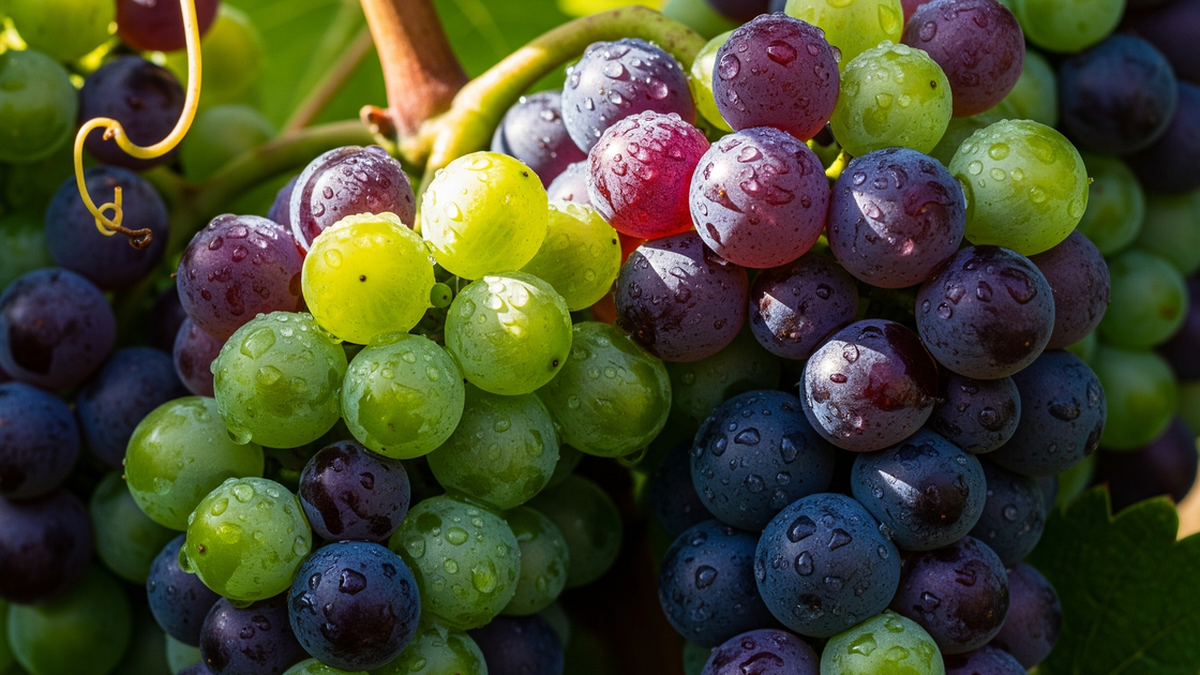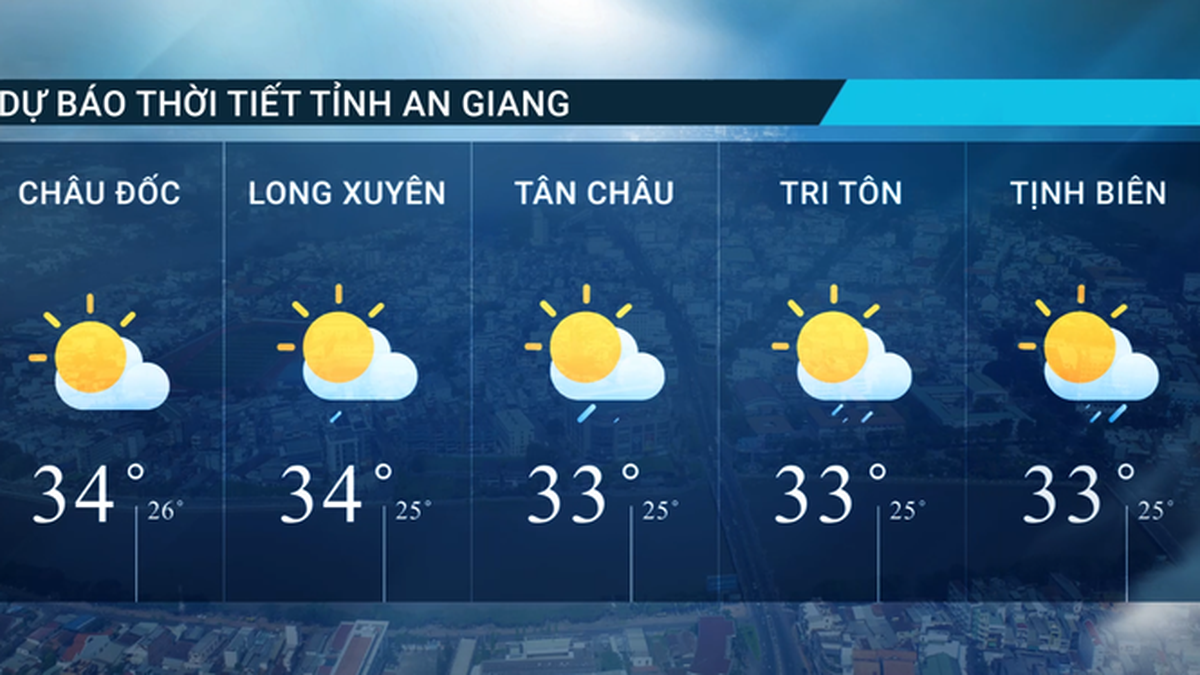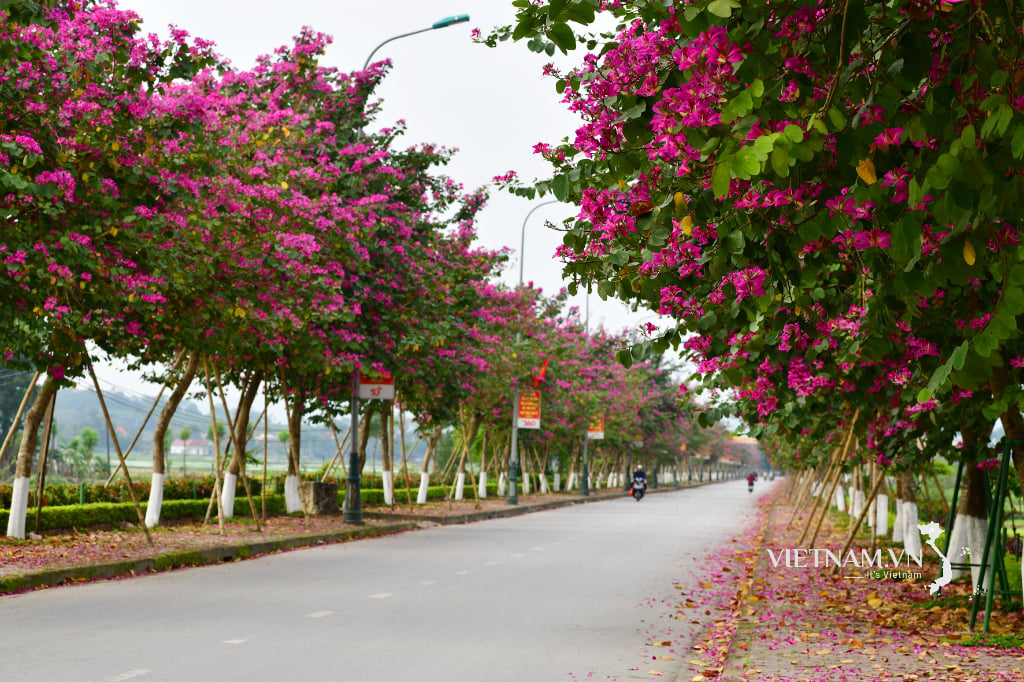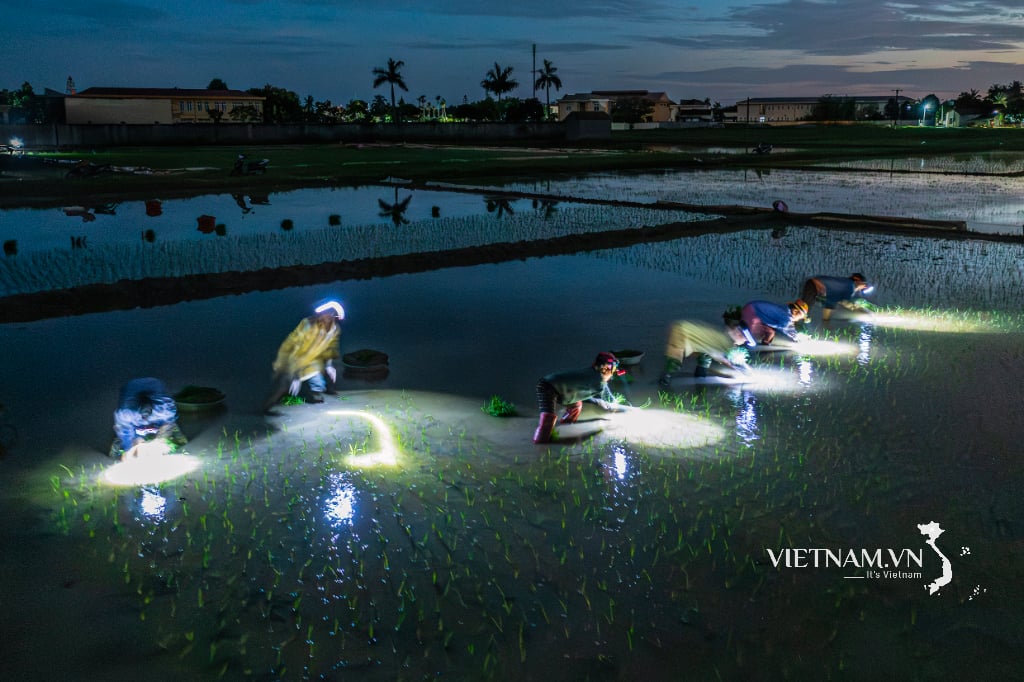A few years ago, when I had just reached retirement age, with a lot of time but little work, a group of friends from the same primary school class and the same buffalo herding sessions organized a year-end meeting. Luckily, the whole group spent more time sitting on the buffaloes than sitting at desks (and everyone did that back then, who knew what extra classes or tutoring were?!). Over the past few decades, they have all been relatively successful, some are provincial leaders, some are scientists , famous businessmen in the cities of Saigon and Can Tho... Only I am attached to the fields, but thanks to knowing how to replace the buffalo with a plow, replace the one-season rice crop with one-season rice crop and one-season shrimp crop, so I am not "overworked and exhausted".
Being the only one who stayed in the same hometown, and our house was near our old school, my friends trusted me to “authorize” us to host the reunion, and my wife and I spent the whole day planning the menu, trying to make it suitable for our friends, especially those who had been away from home for a long time. Suddenly, from Zalo, I received a message from my friend who is now a leading professor of economics in Ho Chi Minh City: “Hey, let’s eat mud-roasted duck, okay?”
I was bewildered. In order not to “ruin” the menu that my husband and I had painstakingly prepared, I called the remaining group, hoping that they would object to the dish that had been buried in the past for decades. Unexpectedly, the whole group nodded and invited each other to eat mud-roasted duck…
On the day of the reunion, my wife and I took everyone to the ancient Lam Vo tree at the edge of the land, a place that once held many memories for us buffalo herders. Completely different from the old days, the roads were now clear and beautiful, although not really wide, but paved, with many kinds of ornamental flowers planted on both sides of the road, meeting the standards of new rural roads. Most of them had left behind their expensive urban suits, all shorts and T-shirts, some even nostalgically searched for their faded Ba Ba outfits. Under the shade of the hundreds of years old Lam Vo tree, which the pioneering generation had left for the farmers, the buffalo herders of the future, and even the travelers who had a place to stop and avoid the rain and sun in the middle of the deserted fields, everyone rolled up their sleeves to work, eat, and have fun together.
First, as the host, I brought out two pairs of striped ducks, grabbed them by the legs, and threw them hard against a tree to kill them quickly. No one cut the necks of the ducks roasted in mud, leaving the ducks whole and the blood seeping back into the meat to preserve the original sweetness (back then, when looking after buffaloes in the fields, where could we find knives, forks, and plates to cut their blood). The best way to eat this dish is with striped-feathered ducks (called striped ducks) or white-feathered ducks (called stork ducks), the largest of which is only about two kilos. Although these ducks are small, their meat is very soft, sweet, and fragrant, and each duck is enough for two or three people to eat. Nowadays, after many years of changing the breed structure, imported super-egg and super-meat ducks have taken over all farmers' barns, each duck weighs three or four kilos, and has a lot of fat, so it is difficult to cook when roasted in mud, and the meat is bland and difficult to eat. To get two pairs of striped ducks, my wife went to the market for several days to order from the seller. They had a hard time selecting the ducks that were mixed in with the flock of super meat ducks.
After the ducks were dead, I put them in the puddle, squeezed and rubbed them so that all the duck feathers were soaked. At the same time, my friend rolled up his pants and waded into the ditch to dig up a pile of mud. Then the two of us used the mud to spread it evenly on the duck feathers, then continued to spread it on the duck's body into a large mass of mud about three adult spans wide, meaning the layer of mud surrounding the duck's body was about one and a half to two centimeters thick. Spreading and spreading the mud also required a certain amount of skill. The wet duck body combined with the mud of moderate viscosity helped the mud stick tightly to the duck's feathers and body. Too soft or slightly dry mud was difficult to spread and difficult to grill; in that mass of mud, the duck's body had to be in the middle so that when grilled, one side would not be cooked and the other side would not be undercooked. At almost the same time, a guy gathered firewood to light a fire. When the two pairs of ducks had become four black mud masses, the fire had just died down, glowing with red and rich coals. We placed two blocks of black mud on the grill placed across the charcoal stove, then took turns turning the mud so that it dried evenly on all sides. Grilling on a charcoal stove is very convenient now. In the past, in the fields, we often had to collect straw and dry grass to burn. Straw and grass burned quickly, and the charcoal was not thick, so we had to burn it many times so that the smoldering heat could penetrate the outer layer of mud and penetrate the duck inside...
While waiting for the ducks to cook, which usually took an hour and a half to two hours, the group gathered together and chatted about family, work, and business. Then so many memories of herding buffaloes kept coming back, endlessly. It should also be said that in the Southern provinces at that time, after plowing in the morning, when the sun was about to set, the adults would release the buffaloes and hand them over to the children to herd them out to eat until the evening when they would herd them back into the barn, in the style of each family's child taking care of their own buffaloes, with few cases of hired herding. And families with buffaloes and fields were not so poor. Each child had five or three buffaloes, and when they went to the pasture, the small herds would merge into a large herd of fifty or seventy, requiring only one or two children to look after them, while the rest - usually the older ones - would gather together, telling this and that to play with, telling this and that to cook and eat together. Near the herd of buffalo, there will always be a flock of ducks running in the fields, because buffaloes wading in the fields and under the dam always cause a lot of commotion, startling shrimp and fish out of their hiding places, and the flock of ducks just pecks and bites until their crop is full. Sometimes, in good fortune there is also bad luck, a few ducks that are fascinated by the food peck into a puddle where a sea crab is curled up to avoid the sun, then leave part of its beak or a leg after the crab pounces. There are hundreds, even thousands of ducks, so these crippled ducks that are left behind are rarely noticed by the duck owners, who consider it a natural "loss". This is a regular source of ingredients for the mud-roasted duck dish of the buffalo-herding children who wander around the fields all day.
Then there are times, not many but they do happen, when a long time passes without a single duck having a broken leg or broken jaw, the herders - above all "the devils and ghosts" - look at the flock of ducks to judge their behavior. A trap made of thread is caught in a clump of bamboo that extends out of the drain leading to the pond, the other end of the thread is tied tightly to a fish sauce pot that is left floating on the water surface. Accustomed to swimming and nibbling for food, the ducks in the lead, usually the biggest and strongest, get their necks caught in the trap. The more the ducks try to escape, the tighter the thread gets around their necks and the water surface shakes violently, causing water to rush in, causing the pot to sink, dragging the ducks deeper into the water. Always keeping an eye out, the whole group giggles, trying to keep a straight face so that the duck owner doesn't notice, then winks at each other and silently prepares mud, straw, dry grass...
Under the heat of the fire, the black mud gradually turned white, and in some places it began to crack, which was also when the duck was cooked. Let it cool a bit, then we put our fingers into the cracks and separated the mud. All the duck feathers, even the smallest ones, were stuck to the mud and peeled off, leaving the duck's body white and fragrant. We, old men in our sixties, sat on the ground, tore the duck into small pieces, dipped it in a little salt, chili, lemon, and some herbs, bitten some ginger, and put it all in our mouths, just like the ten or twelve year old boys of more than fifty years ago. Striped duck and heron duck have sweet and fragrant meat, so they are delicious in any dish, but the strangely sweet taste of the original mud-roasted duck without spices or elaborate preparation, perhaps after just one bite, we will remember it for the rest of our lives.
After finishing one duck, reach out and separate the mud from the next one, because the mud layer can keep the hotness and delicious flavor of the wild duck for a few hours, which is normal.
After finishing the meat, the hostess gently took out the entrails, taking only the heart, liver, gizzard and eggs (if it was a laying hen), the rest was from the ducks waiting outside.
In just a moment, the two pairs of grilled ducks and the bottle of Xuan Thanh brought from home were gone, but everyone's hunger was still not satisfied. The sun had set, the north wind from the Co Chien River gently blew in, making everyone seem closer together around the charcoal stove that was still warm.
I heard that now in many tourist areas, there is a dish called clay-roasted duck on the menu (which sounds better than mud-roasted duck). However, the duck is cleaned, marinated, and wrapped in foil before being covered with clay and put into the grill. This dish seems more polite and civilized, but it certainly cannot be as delicious and fun as the mud-roasted duck of our buffalo herders decades ago.
We make an appointment every year, every two or three years, to gather around the banyan tree in the middle of the field to remember the mischievous times with mud-roasted duck.
TRAN DUNG
Source


































































































Comment (0)